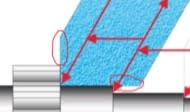sergo92
Student
- Jun 16, 2024
- 7
I am currently working on a presentation on hard turning. My part is to compare hard turning with grinding in various aspects. One of them is "flexibility". I have found a lot of articles and literature saying that hard turning is more flexible than grinding. The only problem is, after a lot of research on grinding, I found universal machines that disprove the flexibility of hard turning. With modern universal grinding machines, it is also possible to machine complex geometries in a single clamping operation and with just one tool. With modern CNC-controlled grinding machines, it is theoretically possible to machine several surfaces in one clamping and with one tool, just as with hard turning.
How do I best explain the flexibility in the presentation so that in the end it is clear that hard turning is more flexible? Please help me, I have already read over the topic.
Thank you very much!
How do I best explain the flexibility in the presentation so that in the end it is clear that hard turning is more flexible? Please help me, I have already read over the topic.
Thank you very much!

